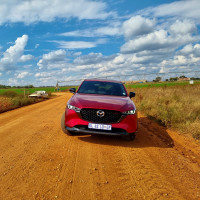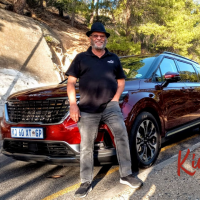How extreme is the Mitsubishi Triton Extreme?
November 18, 2022
If there’s one vehicle segment that embodies South African culture, it would be the bakkie. They come in different styles, from single to extended and double cabs, all for different purposes but serving one function. There are two giant contenders in this space, the Toyota Hilux, and the Ford ranger. Not too long ago, Mitsubishi introduced the new generation Triton, and more recently, the range-topping Triton Extreme. We got to spend some time in this variant and these were our thoughts:

It isn’t a mere marketing ploy where the manufacturer slaps on a few stickers and calls it a “special edition”. The Mitsubishi Triton Extreme is very different from the other variants it shares a name with. You get a full factory body kit that enhances its exterior appearance. These upgrades give the Triton a commanding look and presence. During our time with one, it attracted a fair amount of looks and glances from boets in driving Hilux's - that says a lot. In this segment, the more aggressive your bakkie looks, the better, and the Triton Extreme ticks that box.
According to Mitsubishi, the upgrades fitted to the Extreme are worth R100 000, and the additional cost to the customer from the standard variant is only R40 000. So what are you getting for your extra expenditure? Larger All-Terrain wheels, flared wheel arches, a bonnet protector, a tonneau cover, load bin rubberising, a Bosal tow bar, and a roll bar. These are just the major items, there’s more we haven’t mentioned.
How does it drive?
Bakkies are interesting vehicles that have evolved over time - thankfully. Back in the day, they were agricultural, and not a lot of effort was put into making them comfortable or refined. Nowadays, most pickups are built to be used as everyday family cars and they're becoming more and more refined. What makes the Mitsubishi Triton Extreme particularly interesting is that it doesn't lean towards any extreme. Driving it, you get the sense that it still has ruggedness to it and desires to be actively driven as opposed to sitting and pointing it in the right direction. On the flip side, it's comfortable enough that you won't end up dreading driving it daily. It's a masculine pickup with a very comfortable suspension that soaks up bumps so your spine doesn't have to. With the bigger and wider, upgraded wheels, it's prone to tramlining, but that's a minor inconvenience and a small price to pay for having the beefed-up appearance.

Only one engine exists in the Triton range, and it powers the range-topping Extreme. While there may have been extensive aesthetic enhancements made to the Extreme, the Japanese opted not to fiddle with the engine. It has a 2.4-litre turbodiesel unit, which may seem like bringing a knife to a gunfight when its competitors are offering V6 variants, but after having driven it, we can attest to its more than satisfactory engine performance. The 2.4l is a responsive motor in the lower and upper range, with 133 kW and 430 Nm. It certainly doesn't feel like it's lacking in any way. You can have the Extreme in 4X2 and 4X4. Our unit was the latter and came equipped with 2H, 4H, and 2 versions of 4L. Diff-lock and hill descent control are also part of the package in the 4X4. Not being avid off-roaders, we were thankful for the Triton’s high ride height when we took it off-road for evaluation. The height gave us the confidence to take on and clear most obstacles without fear of damaging the underbody or the front and rear overhangs. A 6-speed automatic gearbox with large aluminium paddle shifters is the transmission on offer.
Cabin feel
Bakkies shouldn't have glitzy, tech-riddled interiors. The Triton is a prime example of this with its minimalist-style cabin. Seats are covered in leather and there’s a manual handbrake, a conventional gear lever, and a wheel for selecting your driven wheels. This is all you need. A Sony touchscreen media screen is the only real “techy” feature you'll find here, and it looks like an aftermarket fitting. Rear passengers are treated to roof-mounted air-conditioner ducts for direct airflow.
How much is the Mitsubishi Triton Extreme?
It has a starting price of R688 990 for the 4X2, and you'll pay R758 990 for the 4X4. It is a lot of money, but when you consider what the competition costs (Toyota Hilux Legend RS and Ford Ranger Raptor) at just under R1 million, the Triton starts to look like an enticing proposition.
Words: Gugu Masuku








